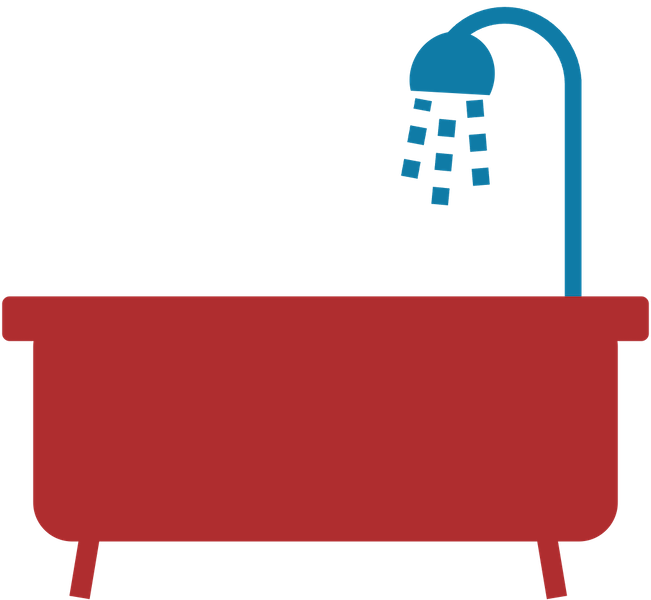One great way to defeat denial and steer clear of greenwashing is to see good examples from real-life businesses. On this page, we highlight companies and products that are truly promoting sustainability in their business practices.
| Company | Product example | In-store/online | Success/role model features | Improvements/clarity needed | URL |
| Faherty brand | Cotton shirts | Many Faherty store locations in the US, or online. Also found in some other retailers. Website provides details on locations. | Uses largely sustainable materials and packaging and have set goals to increase this. They support native artists and have partnered with other purpose-driven organizations, for example for ocean health. They also give 1% to the planet | Not all materials are yet sustainable (and include plastic fibers) and there is low immediate website visibility on the country of origin and labor practices. | link |
| WANT Les Essentiels | Tote bags | Online and in many retailers (store locator on website). | Items are designed to be durable and sourcing is a key consideration. Items are gender neutral. Paper packing material is all or mostly recycled. Packing stickers are recycled and compostable. Thank you notes are Green-E and FSC certified paper. They include a mission statement to use recycled shipping boxes, recycled poly bags, and recycled or compostable packaging from manufacturers. All profits from their upcycled tote bag go toward the One Drop Foundation to secure safe and hygenic water for vulnerable communities. They include lines of low-impact items including recycled nylon, upcycled materials, and organic cotton. | Information on shipping practices is not provided. Information is provided for each item (e.g. if it is made from ‘natural materials’), but not at the company scale (e.g. no statement about cruelty-free, but they are B-Corp certified and held to high standards as a result). There are few commitments for materials overall – and some of them (such as recycled nylon) may have cons. Even though it isn’t using virgin plastics, recyled plastic materials may still shed microplastics into the environment, though this is much better than virgin plastics. A bit more transparency on cruelty-free or other materials rules would be helpful. Packing bubble wrap is mostly recycled, but the items are still plastic (likely not easily recyclable) and not entirely recycled content. | link |
| Tentree | Sweaters | Online and available through partnered retailers. | They plant ten trees for each purchase (they also include a goal of 1 billion trees by 2030) through partner organizations – they allow customers to track where their trees are planted (which is great for transparency). They include many details about the monitoring, community impacts, process and use of the trees. Products use less water than traditional processes. They are a certified B Corp and carbon neutral. They pay living wages and audit factories for fair practices. They include a life cycle analysis of the impacts of their materials (like cotton). They also sell carbon offsets from tree planting. | Production facilities are around the globe which can increase the shipping emissions to consumer markets (but the company is carbon neutral certified and they do list the locations of the factories for transparency). They use recycled polyester – this is much better than new fossil-fuel-based fabrics, but can still shed microplastics. | link |
| Growers & Co. | Overalls and spades (regenerative farming clothes and tools) | Online and in a few retail locations in Canada. | All tools are made with regenerative (best-practice for the planet) farming in-mind, to be good for the soil. Clothes are made from fibers that are not synthetic (e.g. regenerative wool) or are recycled (e.g. recycled polyester). Their magazine highlights the work of small-scale farmers. They also include a program to give back and train new farmers in environmental best-practices. | Recycled synthetic fibers (e.g. polyester) may still shed microplastic fibers because they are, truly, plastic. However, these are repurposed. | link |
| Goodee | Desk, lotion, etc. | Online | Products are designed to be durable, sustainable, and ethical across the value chain. They state that their products minimize waste and are designed to last and follow the United Nations Sustainable Development Goals. They provide living wages and professional development opportunities for suppliers, a portion of profits go toward marginalized communities, and the company advocates for gender equality and diverse leadership. They are a certified B Corp and part of 1% for the Planet (1% of every sale goes toward environmental nonprofits). Brand selection is very intentional and information on each brand is provided really transparently. Each product includes a lot of information on the materials, attributes, and location of origin. You can also shop gifts by their impact. Packing labels are recycled and recyclable. Tape is plant-based and recyclable. Bubble wrap is 90% recycled, and containers are often reused. | Information on shipping practices is not provided. Information is provided for each item (e.g. if it is made from ‘natural materials’), but not at the company scale (e.g. no statement about cruelty-free, but they are B-Corp certified and held to high standards as a result). Packing bubble wrap is mostly recycled, but the items are still plastic (likely not easily recyclable) and not entirely recycled content. | link |
| Pact women’s sleepwear | Pajamas | Online and in-store. | They use mainly organic cotton (low water/chemicals) for their fibers. Cotton is certified by Global Organic Textile Standard. Most factories are fair-trade certified, which is good for labor practices. They publish on their website a life cycle analysis showing the benefits of their practices compared to traditional textiles. They allow shoppers to choose to offset their shipping emissions. They help shoppers donate old clothing/accessories by providing free shipping and encouraging reuse of their boxes and partnering with charities. Packing envelopes are made from recycled paper and boxes from 98% recycled cardboard. Envelopes and boxes are recyclable. They use biodegradable bags for packing materials. Items on the website are clearly labeled with icons which show if they are from Fair Trade facilities and 100% organic cotton, which helps consumer decision making. | They also use elastane, which is a plastic fiber. This contributes to the amount of plastics (including microplastics) entering the environment. While products are mostly produced in Fair Trade facilities, which is good, they are produced in India. This is not entirely a Con, as that is where the cotton is being produced, but there can be little oversight in countries with fewer environmental standards or far from where management is located. And this also results in high shipping emissions (as opposed to when production, management and consumption are all in a similar location). They allow shoppers to offset emissions, but this is chosen by the shopper (at extra cost) and isn’t a universal strategy. Offsets can also be very tricky. Packing boxes are only 98% recycled content (even though this is a lot), and there is no transparency on if tape and labels are recycled/recyclable. The biodegradable packing bags still take a few years to degrade and could cause harm in the meantime (e.g. if they fly into the ocean before making it to the landfill, harming an animal). Additionally, they produce methane in breakdown, a potent greenhouse gas (the company does cite a statistic on the amount of methane from landfills that is captured in the US and reused, but this is not 100% and is only in the US). | link |
| ANYBAG | Tote bags | Online | Plastic bags are recycled into reusable statement bags (with cotton cord). Bags are made in New York City and divert plastics waste (which can be more accountable and include fair pay than factories overseas – and it reduces the shipping emissions to send to a US-based market). | Information is not available on how the items are shipped (e.g. what kind of packaging). | link |
| Mafia Bags | Backpacks | Online and in-store. | Made from upcycled boat sails (which are typically end up in landfill). They reuse cardboard for shipping materials. Bags are made in California (high environmental regulations). They include transparent information, such as disclosing that they originally made face masks in California and then their partner moved this to China. 20% of raw materials are not from reused sails, and these are sourced in the US. | Not much information is provided on details of raw materials (plastics/non-plastics, etc.) or footprint of the company (packing materials, etc.). More transparency would be useful. If sails are made from plastics, these can still shed microplastics during use (though this material is reused for the bags and not newly made with virgin materials). They state on the webpage that they have been members of B Corp since 2013, but they are not in the B Corp directory, so it is unclear what that membership means. | link |
| Swedish Stockings | Stockings | Online | The goal is to produce stockings/hosiery from old stockings, and currently 88% is produced from recycled products (liked plastic bottles). All materials are OEKO-TEX Standard 100 certified. The natural fibers (non-plastics, e.g. wool) used are organic and Bluesign certified for sustainability. They also run a recycling program where consumers can send in old hosiery and they will recycled these to be reused for other industry purposes. Their website includes a very detailed sustainability document. Died water is purified after use, production is done in Italy (many environmental regulations), production is powered by solar and wind energy, and factories are listed as being ‘zero waste.’ They also include a guide on how to preserve the life of your stockings (in order to buy less) – this is a great development, encouraging not just more sustainable buying, but less buying (which is inherently sustainable). They follow the United Nations Sustainable Development Goals. They try to monitor to reduce overproduction and they contribute to social NGOs and causes. Packing is from FSC-certified cardboard and recycled bags. The dying facility uses a mix of solar energy and natural gas (see Cons section), which also consumes 20% less energy and 50% less water (and they reuse water) than typical facilities, and dyes are vegan. They ship only using green-fueled trucks (this is a big step in decarbonizing supply chain emissions) and their online sales partner is in line to have net zero emissions by 2050. For virgin materials, they use organic cotton, and wool that is free from cruel practices, such as mulesing. They provide detailed information (including individual certifications) for all fibers (including recycled fibers). They are also using bio-based materials (and specify that these don’t use ingredients competing with food supply). They list clear environmental and social goals for their future, improving transparency. | 22% of the materials are new/virgin, but the company aims to reduce this to zero. Even recycled plastics (while much better than using new/virgin materials) can shed microplastics during wear. The polyfill bags used for packing delicate materials are made from recycled plastics, but it is unclear if they themselves are recyclable in most residential settings. More clarity on the waste from packing bags is needed – using non-plastic packing would be preferable. They state that the dying process is carbon neutral, but because they use natural gas (in-part) it is unclear how (e.g. if they use carbon offsets or some other process). | link |
Let us know about your favorite “green” products!
Submissions may be vetted before inclusion. For non-Eco-Friendly-Spotlight questions or comments, please go to our Contact page and drop us a line!









